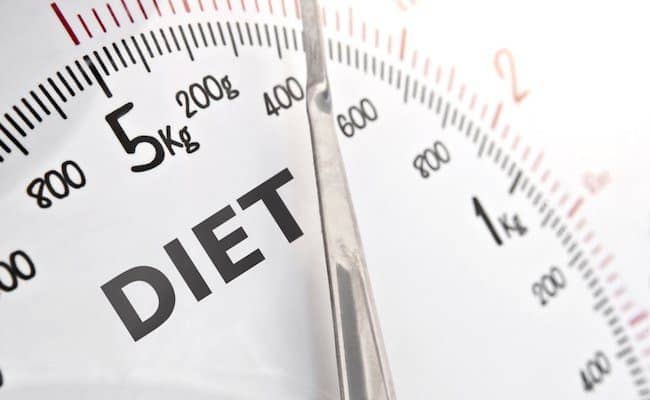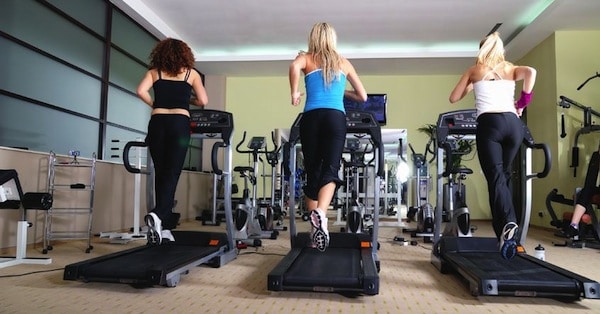
A calorie is a unit of energy that our body uses for fuel for everything. Calorie recommendations vary individually for each person; there is no one magic number of calories everyone should be eating.
Calorie intakes can range from 1,200-3,200 calories for different women and all be considered “healthy” for their bodies.
Calorie Intake For Women
Given individual variances, there are some general calorie guidelines for women. Here are estimated guidelines according to the USDA Guidelines:
- Women who are sedentary 18-30 years old: 1,800-2,000 calories
- Women who are moderately active 18-30 years old: 2,000-2,200 calories
- Women who are active 18-30 years old: 2,400 calories
- Women 51 years and older who are sedentary: 1,600 calories
- Women 51 years and older who are moderately active: 1,800 calories
- Women 51 years and older who are active: 2,000-2,200 calories
According to these guidelines, sedentary means activity involved with typical day to day life, moderate activity includes activity equivalent to walking 1.5-3 miles per day on top of typical day to day activities, and active is walking more than 3 miles per day on top of daily life activities.
Factors that determine calorie needs for female
Factors that determine calorie needs for women include age, activity level, body size, weight goals and health.
Here is a closer look at factors that can help you determine your recommended calorie intake.
Body Size
Smaller women need less calories than women who have a larger body mass. Smaller women can get by usually with a lower calorie recommendation because their body needs less calories to run on.
Smaller women also have a lower metabolic rate compared to women who have larger build.
This also true for anyone going through weight loss; as you lose weight your metabolic rate usually goes down as your body size goes down meaning you need less calories.
Age
As you age, your calorie requirement goes down because metabolic rate slows. In general, younger women need more calories than older women. Calorie intake should shift down naturally as women age.
Exercise
One of the biggest ways to impact your calorie needs is by exercise. Many factors affect how many calories your body burns, but the one where you can control the most is the amount of physical activity you do.
People who exercise can eat higher calories than people who are sedentary, and the amount of exercise you do can greatly vary your recommendation for calories. Someone who exercises only a small amount could burn 250 extra calories, but someone who exercises a high amount could easily burn an extra 1,000 calories per day.
See also:
5 most effective exercises for women
Calorie equations
Since calorie needs are so individual and can vary based on different factors, you can estimate your calorie needs based on various formulas.
For example the Harris Benedict Equation allows you to put in your age, weight and height to give you an estimated basal metabolic rate.
Basal metabolism comprises the calories your body uses at rest like your heart beating, diaphragm moving, etc. It does not include physical activity.
From this BMR number you then multiply an activity factor to this number. For someone who is sedentary or light active, multiply the BMR number by about 1.2. Depending on your activity level you can multiply your BMR number by 1.3-2.0.
This number can give you an estimate of how many calories to eat per day, that are based on your information.
Calorie Intake and Weight loss
If you are trying to lose weight, a rule of thumb is to subtract about 500 calories from your calorie needs. It could be more or less depending on your weight loss goals. Also, keep in mind that in general you don’t want to go below 1,000-1,200 calories.
So for example, if you calculate your energy needs and it is at 2,000 calories per day, your new adjusted calorie recommendation for weight loss could be 1,500 calories.
Conclusion
There are many factors that go into determining calorie needs, and every woman is unique. There are general guidelines in place by the USDA for women for certain ages and physical activity levels, but they may not always match up with every woman.
In order to determine your calorie need, you need to take into account body size, age, activity level by plugging your numbers into something like the Harris Benedict Equation. Then multiply this number by an activity factor that best meets your activity level.
If your goal is for weight loss, you can subtract roughly 250-500 calories from your estimated calorie needs.
Keep in mind, determining individual calorie needs can be helpful but the quality of the calories is very important. Quality and quantity of calories go hand in hand.










